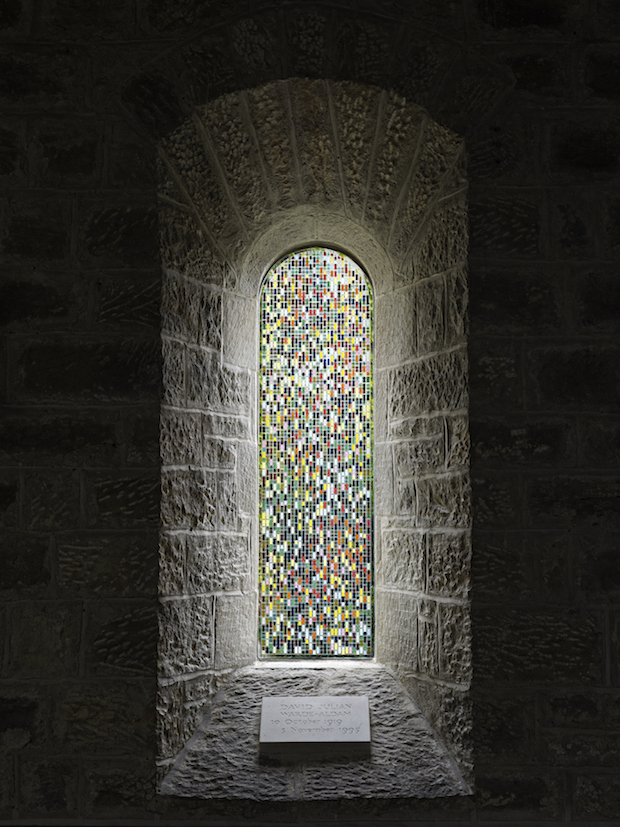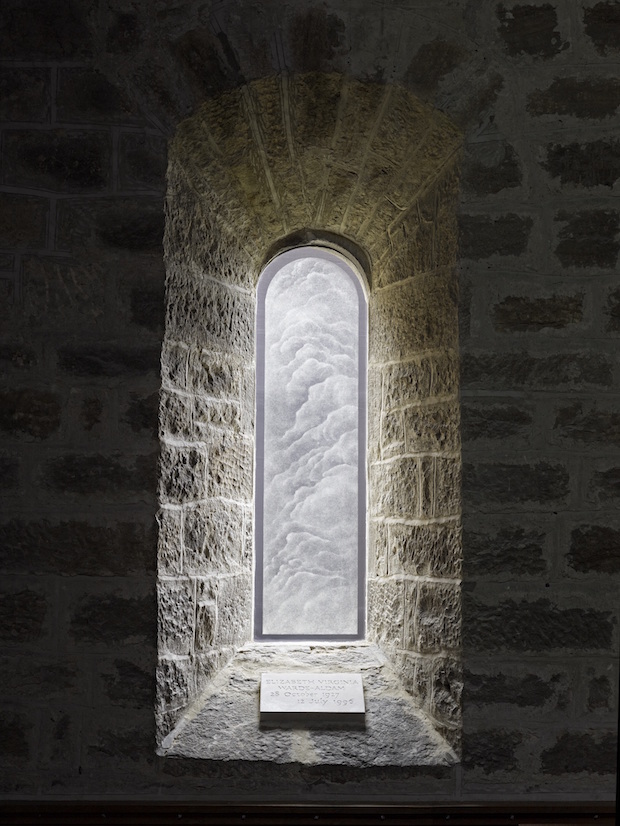Recent stained glass commissions, for David Hockney at Westminster Abbey and Bridget Riley at the Gemeentemuseum in the Hague, have brought back memories for me. In 2009, I asked the artists James Hugonin and Anne Vibeke Mou to make windows in memory of my parents for the tiny Northumbrian church where, between them, they had clocked up nearly 100 years of attendance.
Like Hockney and Riley, Hugonin and Mou had no previous experience with windows. A further challenge for them was the Church of England’s often-resented approval process for the furnishings, fabric, and architecture of church buildings. Called a ‘faculty’, this type of license requiring presentation, public consultation, expert opinion, and box-ticking can mean, theoretically, a six-month wait before you know whether you can plant a bush in a graveyard. On the plus side, however, faculties do ensure that Anglican churches are well protected from bad planning decisions and inappropriate or poor design and art. We just had to hope the faculty committee would accept an absence of overt religious imagery or narrative, and be broadly sympathetic to the artists’ intentions.
Hugonin’s proposal was for a three-dimensional version of one of his paintings, in glass. So, instead of light reflecting off the hundreds of tessellated rectangles of complementary colours that are his hallmark, it would travel though two thin glass sheets holding similar rectangles of hand-blown glass in place. Mou, whose practice is drawing-based, was to render clouds in the glazed surface by making repeated blows with a tungsten stylus.
Contrary Rhythm (2010), James Hugonin. Photograph: John McKenzie/Image courtesy the artist and Ingleby Gallery, Edinburgh

Each window, we believed, would be an object for contemplation as well as a work of art. People often use the church for just such a purpose, many writing in the visitors’ book of their thanks for a place of quiet and peace, away from a fast-moving world. The new designs, moreover, had to be good neighbours: to glass works from the mid 19th century (when the church, St John’s Healey, was built), Arts and Crafts glass in an eccentric rose window (that Pevsner says ‘has to be seen to be believed’) and a set of three, fine Chagall-esque windows by Leonard Evetts, commissioned by my father in the late 1950s.
We assembled the evidence for our case. Our precedents for areligious, non-figurative work were Sigmar Polke’s 12 abstract, stained glass windows for Zurich’s Grossmünster Cathedral (2009), and Gerhard Richter’s window for the south transept of Cologne Cathedral, installed two years before. Richter reputedly had a difficult time persuading the ecclesiastical authorities of his proposal’s validity; not long after its dedication, Joachim Cardinal Meisner, Archbishop of Cologne, was quoted as objecting that it would have looked just as at home in ‘a mosque or a synagogue’.
This argument worried me: I didn’t agree with it, but neither did I have an answer which could satisfy (or throw off) a hard-line traditionalist in a dog collar. I was anticipating trouble. Sleep might have come easier had I been aware of supporting material closer to home: at St Mary’s Church, Wreay, the 1840 church that Sara Losh designed and built in next-door Cumberland. Here was my ammunition: old stained-glass church windows that she had ordered to be smashed up and collaged into abstract patterns of breath-taking, vivid intensity. Doh! It was right under my nose.
As it turned out, the faculty committee couldn’t have been more supportive; befitting of a Northumbrian Church which, under the Venerable Bede was already pioneering the use of stained glass in the seventh century at St Peter’s, Monkwearmouth. The congregation responded sympathetically to the presentation we made to them and, in June 2010, James Hugonin travelled to Taunusstein near Frankfurt to work with technicians from Derix Glasstudios, while Anne Vibeke Mou set herself to her task in her studio.
Untitled (2010), Anne Vibeke Mou. St John’s Church, Healey, Northumberland.
Photograph: John McKenzie/Image courtesy the artist

Both windows exceeded all expectations and that, some months after their installation and the publication of a booklet, Hugonin and Mou found themselves joint winners of the prestigious ACE (Art and Christianity Enquiry) Award for Art in a Religious Context, 2011. The shortlist included Thomas Denny, Antony Gormley, and three cathedrals.
Bridget Riley’s magnificent window is already installed in the Gemeentemuseum, and complements a painting of hers the museum acquired some years ago. I dare say the project sailed through the formalities. I can only hope that David Hockney will enjoy as smooth a passage through the Church of England’s faculty process. Bearing in mind that the Abbey’s commission is in honour of the Queen, he may also have to deal with Buckingham Palace. I have no doubt that his considerable resources of charm and clear-sightedness will see him through – but the best of luck to him all the same.


